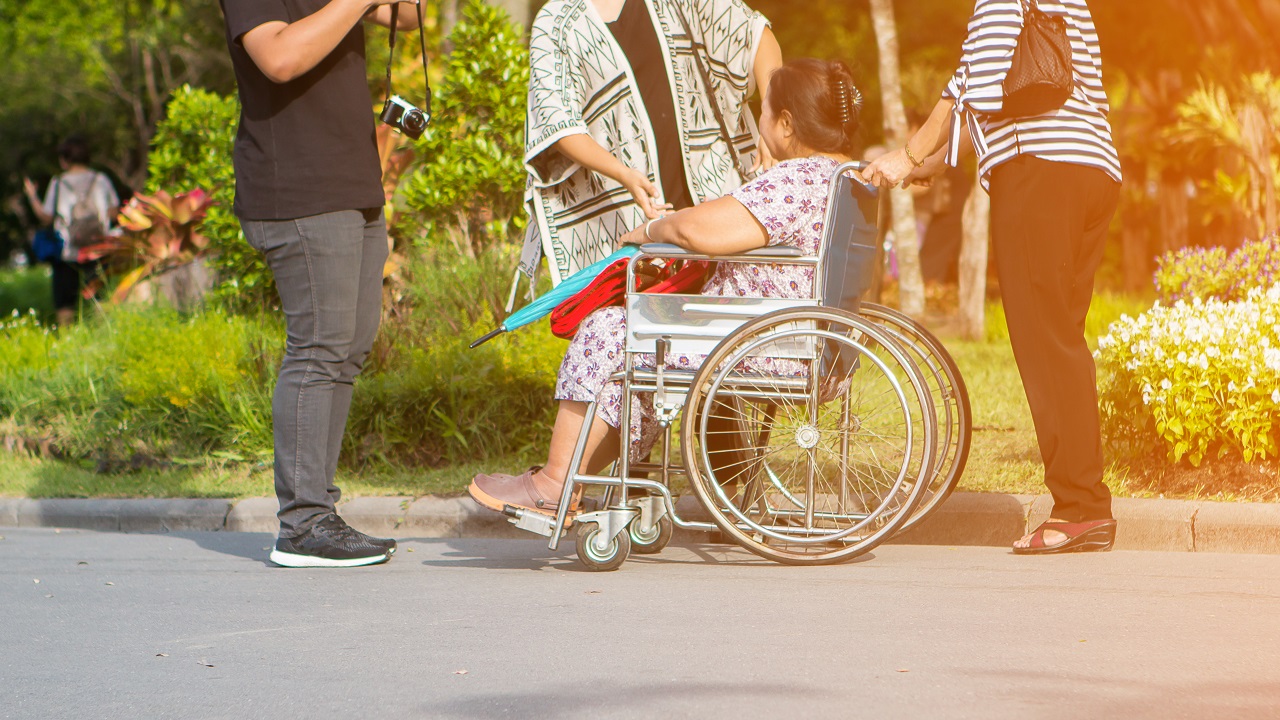Many families would like to bring their loved ones home from long-term care facilities for a few days, especially over important holidays, but they are often worried about the repercussions of doing so. Two of the most common concerns are losing Medicaid or Medicare coverage for their stay and possibly losing their bed (room) in the facility.
Can You Take Someone Out of a Nursing Home for a Day (Or Longer)?
The good news is that nursing home residents are typically permitted to take some time away from their facilities. Terminology varies, but leaving a nursing home or skilled nursing facility (SNF) for non-medical reasons is usually referred to as “therapeutic leave” (defined as a home or family visit to enhance psychosocial interaction) or a temporary leave of absence (LOA). Note that non-medical leave is different from being formally discharged from a facility and from temporarily leaving a facility due to hospitalization or transfer to another health care facility.
Assuming the health of the resident permits and their doctor agrees, the resident can leave the facility for a few hours or days to spend time visiting with friends and/or family. Such a leave of absence must be arranged well in advance with nursing home staff so they have time to prepare any medications the patient will need as well as instructions for the temporary family caregivers.
In addition, there are specific rules for these outings, depending on how the resident’s care is being paid for. Medicaid, Medicare and private insurance all have different policies on top of the facility’s own unique regulations. Giving a facility plenty of notice will ensure there are no surprise costs, lapses in care or other misunderstandings if a resident decides to take a leave of absence.
Medicaid Bed Hold Policies
Medicaid covers long-term care for seniors who meet strict financial and functional requirements. This program is jointly funded by the federal government and states, so specific programs and their eligibility requirements and regulations can vary widely.
The length of time a resident is permitted to leave a nursing home under Medicaid rules depends on which state they live in. For example, Michigan Medicaid allows a maximum of 18 days of leave within a continuous 365-day period. Colorado’s state Medicaid program, Health First Colorado, is even more generous, permitting up to 42 days of covered physician-approved non-medical leave per calendar year.
Assuming the state-allotted number of days is not exceeded, a resident’s bed will be reserved until they return to the facility and the expense will be paid by Medicaid (sometimes at a reduced rate). In some states, a resident’s family may be able to pay out of pocket for additional time away from the facility without losing their bed.
However, there are a few states that permit non-medical leave but do not pay to reserve a resident’s bed while they’re away. A resident (usually with the help of their family since they have very limited income and assets) will have to pay privately to hold the bed the entire time they are gone. Otherwise, they may only be entitled to the first available bed in a semi-private room upon their return.
If your loved one is receiving Medicaid-covered care in a nursing facility and wishes to take a leave of absence, you’ll need to check with the facility about their bed hold policies as well as the state’s regulations to ensure your plans are in compliance. Consumers can find some of this information by referencing the most recent Medicaid Bed Hold Policies by State fact sheet compiled by the Long-Term Care Ombudsman Resource Center.
Medicare Leave of Absence Rules
Unlike Medicaid, Medicare only covers medically necessary short-term rehabilitative stays in a SNF under specific conditions. One of the most widely known conditions for coverage is a qualifying three-day hospital stay. Most patients who require this high level of care are unable to leave the facility safely, but leaves of absence may be possible in some instances. The Medicare Benefit Policy Manual cites special religious services, holiday meals, family occasions, car rides and trial visits home as reasons why a patient could receive an outside pass.
When it comes to counting inpatient days for billing purposes, though, things can become complicated quickly. Medicare always uses full days as units for billing and the midnight-to-midnight method to determine whether or not a particular day “counts.” According to the manual, “A day begins at midnight and ends 24 hours later.” This means that the timing of a loved one’s “break” from the facility is extremely important.
For example, if a resident leaves at noon for a grandchild’s birthday party, this day would be considered inpatient and covered by Medicare as long as they are back at the SNF before midnight. On the other hand, if a resident were to leave the facility at 7 p.m. on December 24 to have a family dinner and then attend midnight mass, they would likely return to the SNF very early in the morning on December 25. In this case, Christmas Eve would not count as an inpatient day (uncovered), but Christmas Day would (covered).
Medicare does not pay to reserve a beneficiary’s bed on days that are not considered inpatient. In the event that a resident takes an overnight leave of absence, any uncovered days of service must be paid for privately. The facility MUST notify the resident of the bed hold rates and policies in writing, explain how they will be applied, and obtain the resident’s agreement to these terms before they take their leave, otherwise the facility cannot charge them.
How Leaves of Absence Work With Other Types of Insurance
Finally, note that if nursing home care expenses are being paid through a private health insurance policy or long-term care insurance plan, you must check with the insurer to find out their rules for leaves of absence. Not every policy will permit a resident to leave for visits without causing a loss of coverage.
The premise of covering a stay in a nursing home or SNF is that the patient cannot live safely without such a high level of inpatient care and supervision. If long and frequent leaves of absence are possible, then the entities paying for this care will begin to doubt that it is actually necessary and may refuse to pay. Be sure to cover all your bases when planning a holiday or outing for your loved one. A mistake could be quite costly.
Taking a Leave of Absence and COVID-19
The last couple years have been particularly challenging for senior living residents and their families. Early on in the pandemic, safety measures meant to prevent the spread of the coronavirus hindered visits and left countless seniors isolated and lonely. Fortunately, the Centers for Medicare & Medicaid Services (CMS) has issued new guidance, allowing visitation for all residents at all times. In a 2020 alert, CMS strongly discouraged nursing home residents from taking leaves of absence over the holidays, but updated recommendations dictate that “facilities must permit residents to leave the facility as they choose.”
CMS continues to support a resident’s right to leave the nursing home, but it is important to remember that most of this population is at increased risk for severe illness or even death due to COVID-19, especially immunocompromised individuals and those who have not been fully vaccinated and boosted. Before planning holiday visits or temporary LOAs for nursing home residents, carefully consider the risks and benefits of these decisions for yourself, the resident, your loved ones, other residents, and the staff who work at these facilities.
Speak to nursing home administrators regarding their specific infection control practices and policies, as this should be an important factor in the decision. Residents who choose to leave may be subject to monitoring and screening. At the time of publication, the CDC’s recommendations are that residents who leave nursing homes for 24 hours or longer should be treated as readmissions and may need to wear a mask for 10 days even if they have a negative COVID test upon readmission.
Of course, official recommendations and personal decision-making processes are constantly evolving in response to factors like levels of community transmission, data on vaccine efficacy, and the emergence of new coronavirus variants. Be sure to stay current on the federal, state and local safety rules and regulations and clearly communicate your plans with your loved one’s facility before any visits or leaves of absence. For more guidance on holiday celebrations, small gatherings and nursing home visits, visit CDC.gov.

